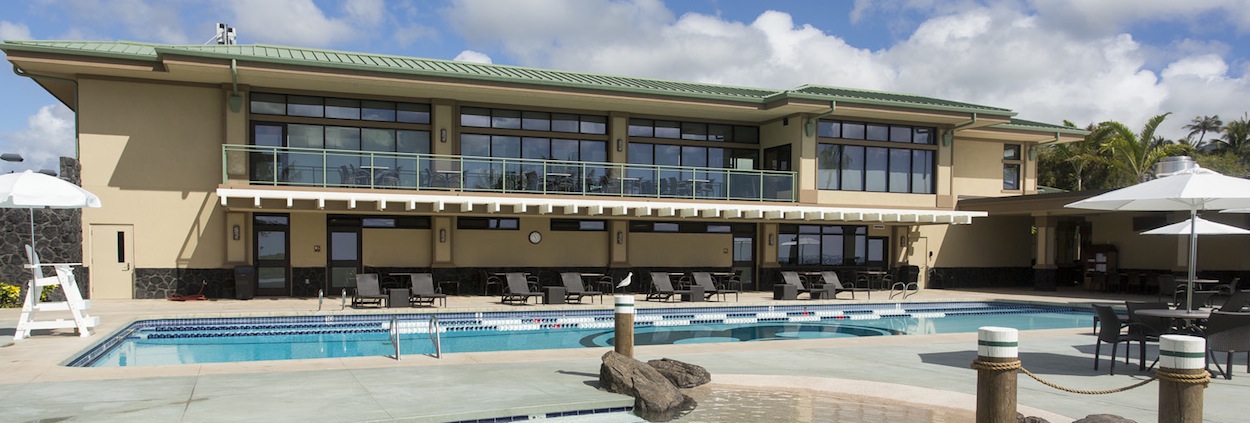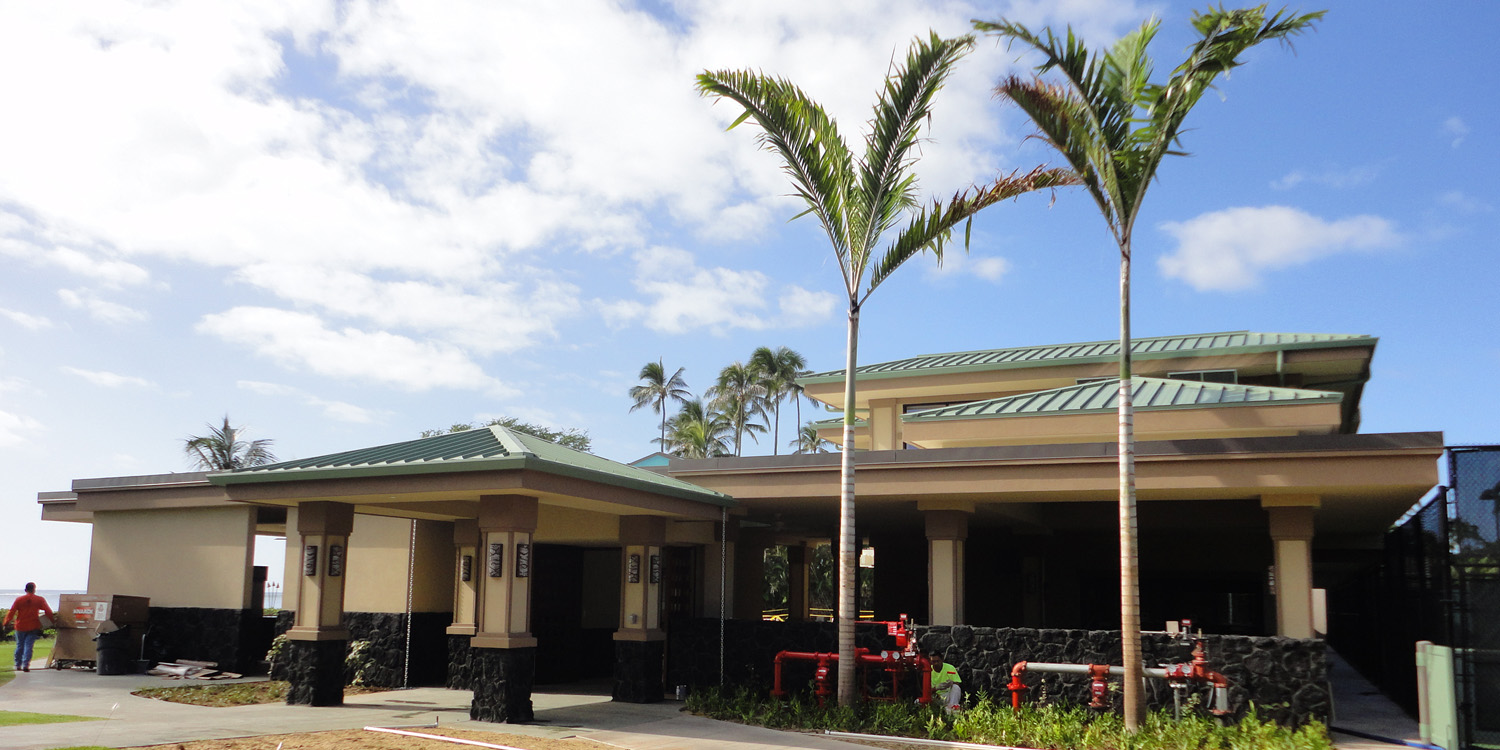

Ushijima Architects, Inc. (UAI) was selected to provide complete architectural and engineering design services for Hale Ohana Ola, a new beach club facility at Wai’alae Country Club (WCC). The Project, which was procured through a design-assist method of construction, consisted of a new two-story facility of approximately 8,000 s.f. and a new 500 s.f. food service building with an outdoor bar and covered outdoor gathering areas. UAI coordinated with WCC consultants to provide a new Jacuzzi and “Kiddie” Pool and photovoltaic system.
During the Pre-Design Phase, and in order to meet the project completion deadline, UAI informed WCC about the potential impacts of zoning and flood restrictions on the particular site and collaborated with WCC’s planner and the City & County of Honolulu to expedite a Special Management Area (SMA) approval. UAI met continuously with the Planning Consultant, WCC, and the City to facilitate an SMA submittal that all parties would be willing to accept. UAI also facilitated a flood mitigation plan due to the proposed floor elevation being lower than the certified flood elevation of that particular area. In it, UAI proposed a plan to utilize flood control gates and limited window sill heights to be at the certified flood elevation.
Design of the new two-story facility included field verification and demolition of an existing one-story locker/shower room facility. The ground floor consisted of a new lobby with elevator, men’s and women’s locker/shower room accommodations, tennis pro-shop, and multi-purpose room. The upper floor included a reception area, restrooms, meeting room, large open multi-purpose area used for stretching and fitness, and mauka/makai viewing decks.
During construction, burial remains were uncovered on site. UAI collaborated with the State Historic Preservation Division, WCC, and an archaeologist to make design changes necessary to limit disturbance to the area. Revisions were made on a “fast-track” basis to provide a new vertical lift instead of a commercial-type elevator, thus reducing the amount of excavation required at the site.
Status: Completed in 2014
